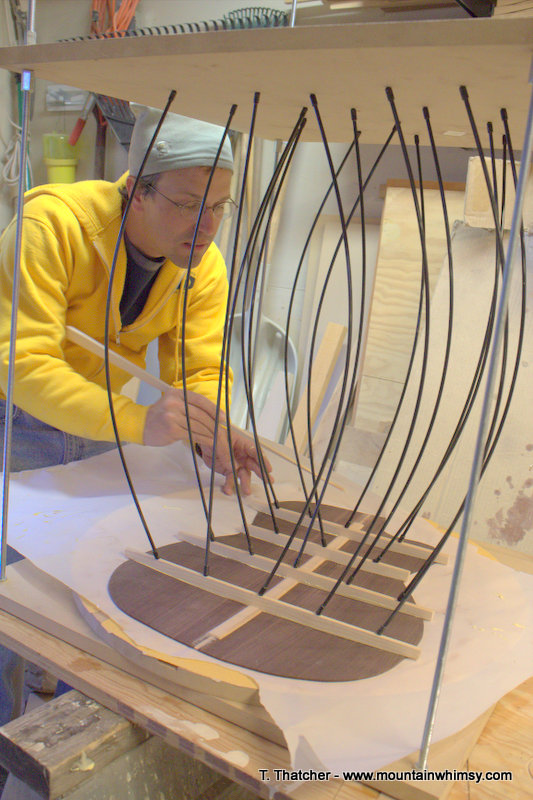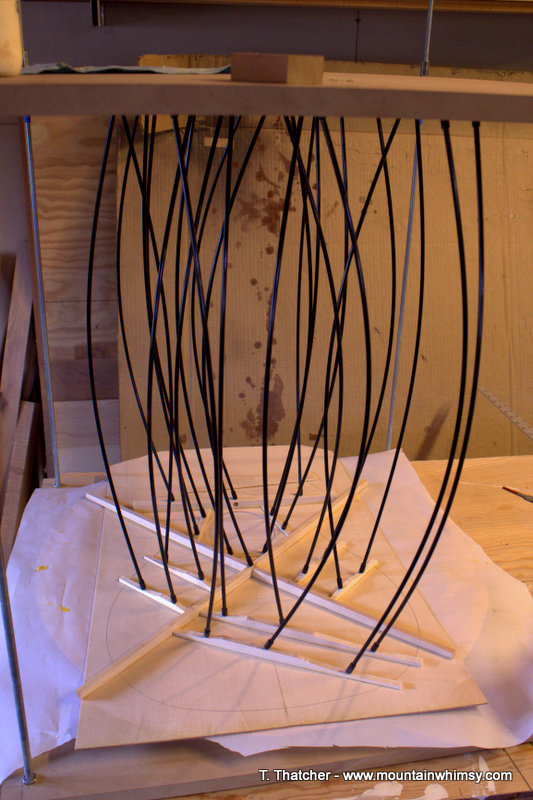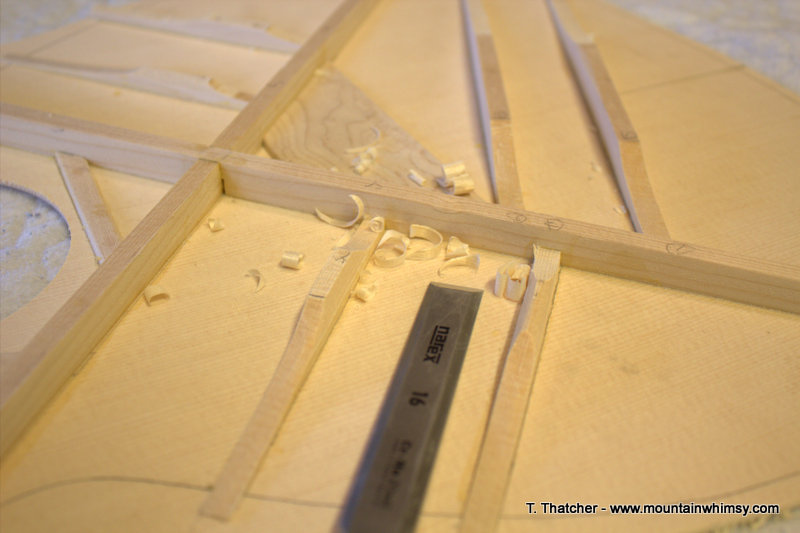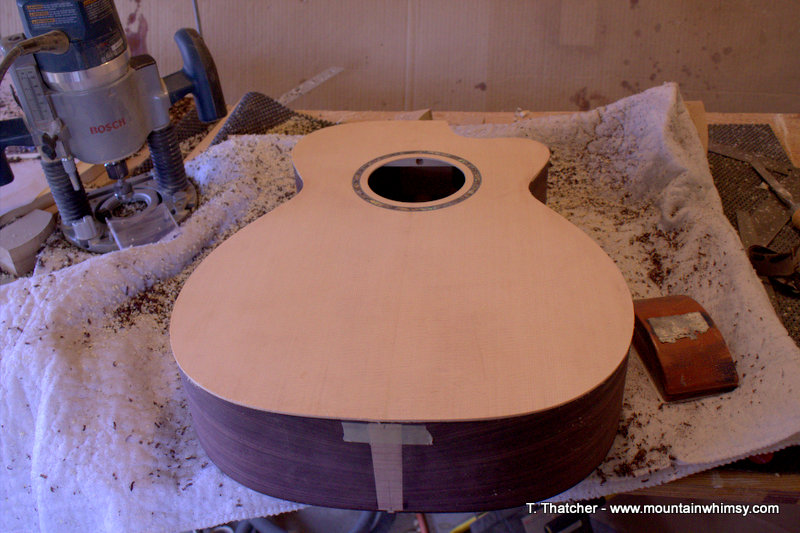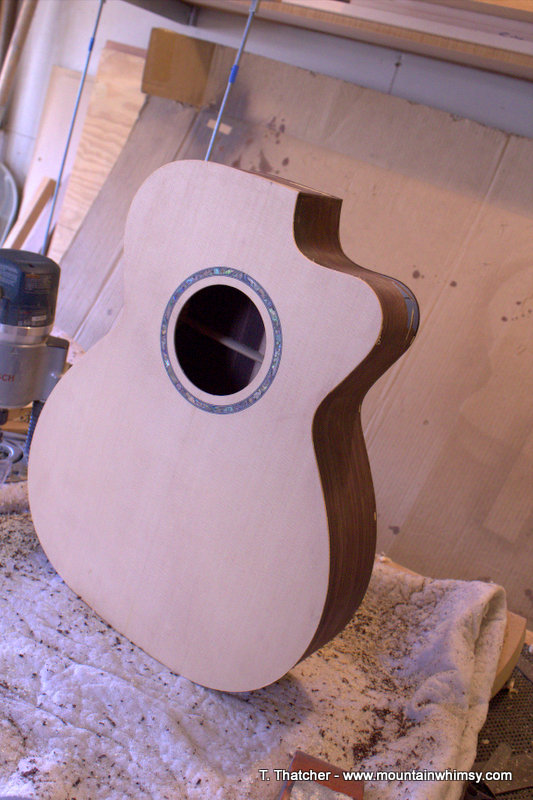More progress on the OM acoustic guitar.
Guitars are subject to a lot of stresses once the strings are attached and brought into tune. This string tension can apparently rip a poorly built guitar apart – something I’d like to avoid. A series of internal bracing is designed to strengthen the guitar, without making it so stiff that the string vibrations are not amplified. Finding the balance between strength and liveliness is called “voicing” the guitar.
First, the back receives cross braces. Most people seem to agree that the back and sides can be pretty stiff, so the bracing can be somewhat larger and less complex.
A curve is put into the back side of these braces to match the radius dish before being glued in place using same radius dish. This is where the GoBar deck earns its keep! The result is a guitar back with the same radius as the dish.
The back braces are then shaped to taper down to a couple of millimeters thick where they cross the edge of the guitar back. They are also shaped to a rounded point across the tops of each brace. Sorry, no photos of this for some reason. The sides of the guitar are notched to allow the back brace to pass through. Finally, the back is glued to the sides using the GoBar Deck. As the sides are already radiused for the correct curvature to match the back bracing, the fit is very good.
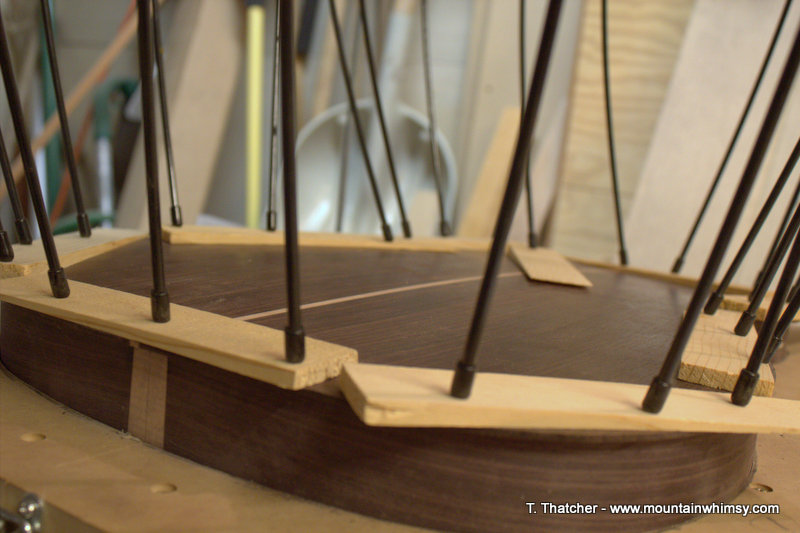
The process is repeated for the front of the guitar, the soundboard. The bracing pattern here is a bit more complex. I am using a standard X-bracing pattern for steel-stringed guitars. It consists of a primary X that provides the main support for the bridge and strings. Various other braces known as tone bars, fingers, and lateral bracing provide intermediate support for the soundboard and are designed to allow the top to vibrate. The size, shape, position, and species of wood used for the bracing all play into the final “voice” of the guitar. The process of shaping the bracing apparently comes with experience. How much wood to remove, where to remove it, etc. are learned over the course of building many guitars. I did not get too fancy with the shaping. I added some standard scallops and stopped the tone bars and fingers short of the guitar sides. This is all supposed to help “loosen up” the guitar top and make it more responsive.
The sides are finally glued onto the soundboard, again using the radius dish and GoBar Deck.
A quick trim around the edges with a flush trim router bit and I have a completed guitar body.
Stay tuned for the next post on binding the edges of the body.


